
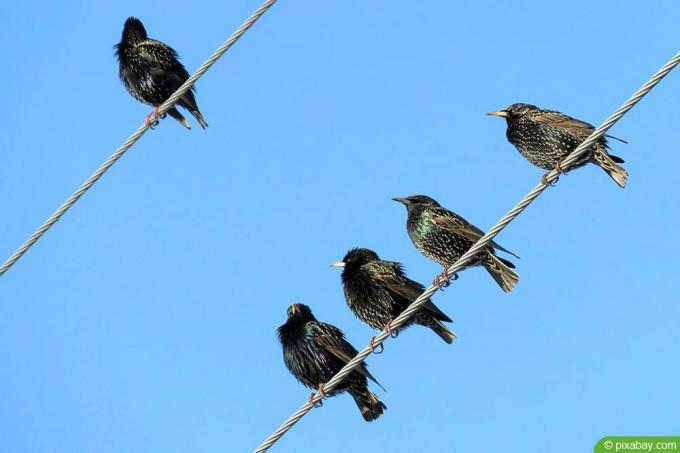
Table of contents
- Instructions for building a "star box"
- Materials for the nest box
- Step-by-step instructions for building
- Assembling the nest box
- Not only starlings will be convinced
- What to pay attention to
- Worth knowing about starling nest boxes shortly
The native bird species, including the starling, are being increasingly crowded out in their habitat. Due to the high level of infrastructure and fewer and fewer nesting opportunities, it is not easy for starlings to look after their young. A nesting box can help here, which you can easily build yourself using the instructions.
Instructions for building a "star box"
What is meant, of course, is not the speed camera colloquially referred to as a star box, but a nesting box that supports the birds and encourages them to breed. In gardens, open spaces and urban outskirts, a nest box can create a whole new habitat for native birds. It is important that the construction was tailored to the needs of starlings and adapted to their body size. The birds will accept the nest box and soon happy chirping will ring out in the garden.
Materials for the nest box
Wood is mainly used for construction. The nest box builder can use either glued timber or natural wood. It is important that the wood has not been treated with insect repellents or other wood preservatives that are poisonous to birds. Nails and a little roofing felt are also required. A jigsaw or jigsaw and circular hole saw, a hammer and pliers are sufficient tools. So it is not difficult to build a nesting place for the starling from the specified materials and with the appropriate tools and to invite the birds into your own plot. The nesting box consists of a base and a lid, two side walls, a rear wall and a front, into which the entrance is cut into shape. A board is also required to attach the nesting box.
Step-by-step instructions for building
A nest box for starlings should not be less than 25 cm high and 20 cm wide. First, the individual parts are measured, marked and sawn. With the following tips and dimensions, the construction succeeds precisely and precisely for starlings.
- Back panel 30×19 cm
- Front 26×15 cm
- Side parts 2x with 30x17x26 cm (shorter at the front than at the back)
- bottom 15×15 cm
- Roof 22×26 cm
To prevent rainwater from accumulating on the roof, it is applied at an angle. The side walls, which are 26 centimeters high at the front and 30 cm high at the rear, serve this purpose. The slant can be easily realized with the jigsaw. Since the front is also 26 centimeters high, the roof rests on both the back and the front. Once all the components have been cut to size, the rear wall must be provided with a slight incline on the top edge. This is the only way that the roof can be installed without a gap and thus absolutely tight and protected from the weather. In the upper third, a loop hole with a diameter of 45 millimeters is worked in with a circular hole saw. The hole must not be made too deep, otherwise the young starlings could reach it and fall out.
Assembling the nest box

Roofing nails are best. They are long, easy to hit into the wood and have a narrow head that does not pose any risk of injury to the birds. If a nail is hammered crookedly into the wood, it can be easily removed with the pliers. Under no circumstances should it remain in the nest box, since the injury would be enormous for both the young starlings and the mother. When assembling, this order is recommended:
- Connect the back wall to the floor from behind (the floor is in the nest box)
- Attach the strip for fastening, hammer through nails from the inside or use screws
- Nail side panels to the floor
- Put on the front and connect it to the floor and the side walls
- Put on the roof, fasten with nails on the side walls, the front and rear wall.
If the nesting box is to be protected from premature weathering with roofing felt and made particularly moisture-resistant, the roofing felt is now applied. This can easily be cut with scissors and should stand a millimeter above the edge of the roof so that moisture cannot collect between the roofing felt and the wood. Roofing felt is easy to nail. Shorter nails can be used for this. Since the starling wants to fly high, the nesting box should be placed at a height of at least 4 meters, better even a little higher. The finest nesting box will not be accepted if it is just above the ground or at the gardener's eye level.
Not only starlings will be convinced
A nesting box for starlings attracts not only them, but also the wryneck. This prefers the same nesting conditions as the starling and finds the structure just as interesting. In a large garden it is therefore advisable not to build just one nesting box. Of course, the place where it is to be hung is also important. With a minimum height of 4 meters and a quiet location in nature, it is guaranteed to be accepted. Under no circumstances should a nesting box be too close to the house or a busy road. The constant agitation would disturb the birds when nesting and could result in the mother starling not returning to her young. Prying eyes are also discouraged. Starlings need quiet and seclusion in order to care for their offspring in peace and to take care of the offspring. The gardener only sees the young birds when they make their first trip out of the nest box and look around the garden.
What to pay attention to
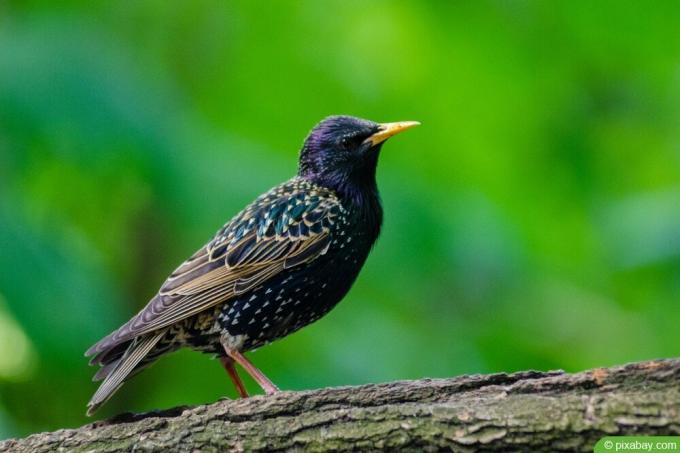
The wood must not be treated and therefore not toxic. Natural wood is therefore optimal. But glued wood is also suitable, provided it is not subsequently treated with wood preservatives. However, the nesting box may be painted. A weather-resistant paint that is water-based is suitable for this. Children's toy paint and other solvent-free paints can be used. Glazes, stains or paints containing solvents are dangerous for the starling and must not be used for a nest box. Before hanging up, check that no nails are sticking out of the wood and protruding into the nest box. The risk of injury to the starlings would be enormous and would go against the good intentions of the construction project.
Worth knowing about starling nest boxes shortly
Starlings usually appear in larger groups. They are cave breeders and willingly accept nest boxes:
- The entrance hole in a star box must have a diameter of 45 to 50 mm.
- The nesting box should be secured cat-proof.
- The brood chamber for a starling is better measured a little larger.
- The base area for a nesting box should be about 16 x 16 cm.
There are quite newfangled nesting boxes for starlings on the market. They look quite unusual, but offer some advantages for the animals. They provide good protection against predators such as magpies, jays and cats. The young birds can no longer be pulled out of the nest box. This is because the actual entrance hole is preceded by an anteroom. This is closed on the outside by a metal grid. The brood chamber is therefore completely protected. Although this nesting box no longer has a perch, it is not necessary. It only makes the job of the nest robbers easier.
- With starlings it is absolutely necessary to clean the nest boxes before the new breeding season.
- Dirty star boxes will not be accepted. In addition, vermin and parasites can threaten the brood.
- Star boxes should be hung with the entrance hole facing southeast to east. This location offers the nest boxes the best protection from the weather.
Tip:
In general, only untreated wood is used for nesting aids.
 garden editorial
garden editorial I write about everything that interests me in my garden.
Learn more about nest boxes

Blackbird - profile, food and help in winter
If you can hear a rustling in the leaves or a beautiful bird song in the garden, then in most cases it is a blackbird. While the bird used to be shy and secluded in forests, it has become more accustomed to close proximity to houses and even nests there.
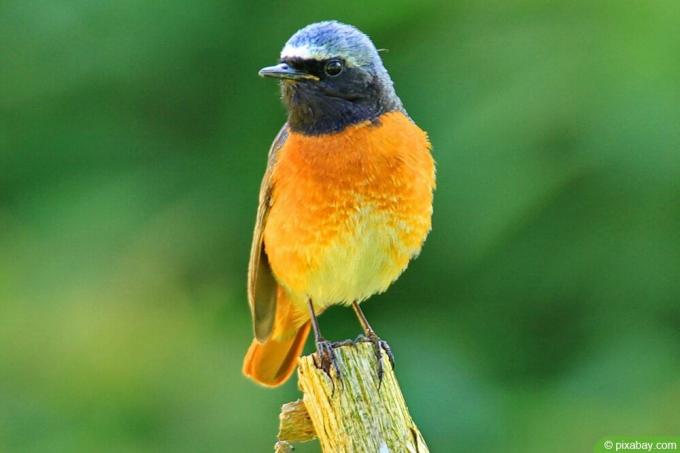
Redstart - build a wanted poster and a nest box
In the past, the redstart was thought to be the summer variant of the robin. Today, many people no longer know the colorful bird. This is because it is rarely found in our gardens. To stimulate much-needed help for the bird, the Redstart was voted 'Bird of the Year 2011'.

Hanging up nest boxes: direction for tits, star boxes & Co
Nesting boxes are a welcome support for our native birds, as they find fewer and fewer opportunities to build a safe nest in nature. Here you can find out what is important when hanging up a nesting box and the importance of the cardinal direction.

Secure the aviary and nesting box from cats - this is how you protect birds
When cats are out and about in the garden, it can cause a lot of stress for birds. Young birds in particular are easy prey. Here you can find out what methods bird lovers can use to make hunting more difficult for cats and to protect birdhouses and nesting boxes from them.
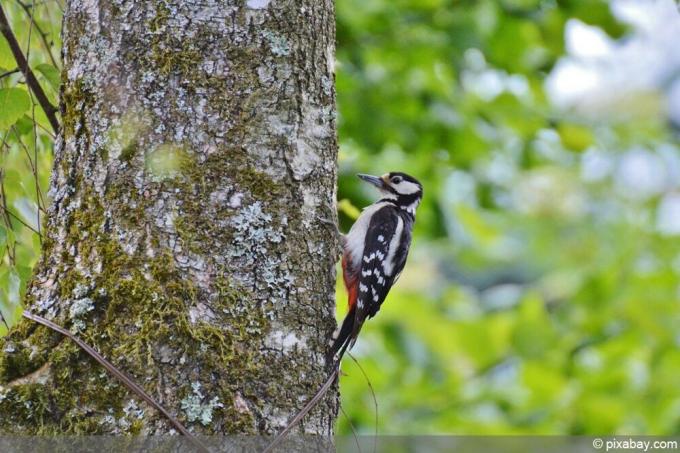
Build a woodpecker hole: free building instructions for a woodpecker nest box
Long gone are the days when birds could easily find their nesting sites in hedges or dead wood. This is especially true for cave breeders like the woodpecker. Whoever wants to do something good for him builds a nesting box for him. As this is explained here.
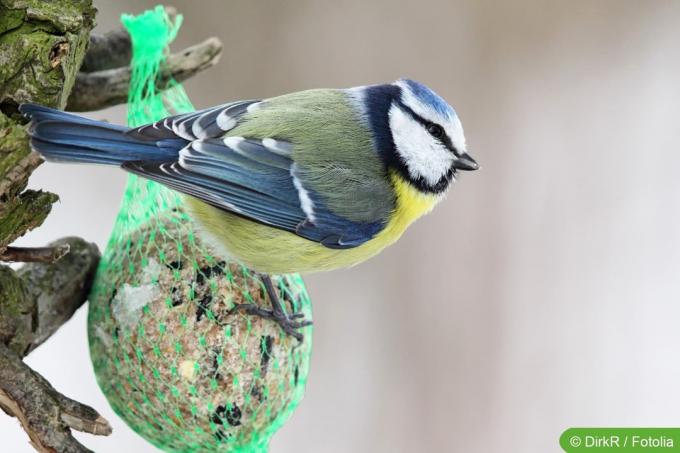
Blue tit - profile, way of life and nesting box tips
Blue tits start looking for suitable nesting sites as early as February. They start building their nest relatively early, usually in March or at the latest in April. The birds gladly accept the nest boxes that are hung up for them everywhere. They could also breed in natural tree cavities, but there is a lot of competition there. How can you support them as a hobby gardener?



